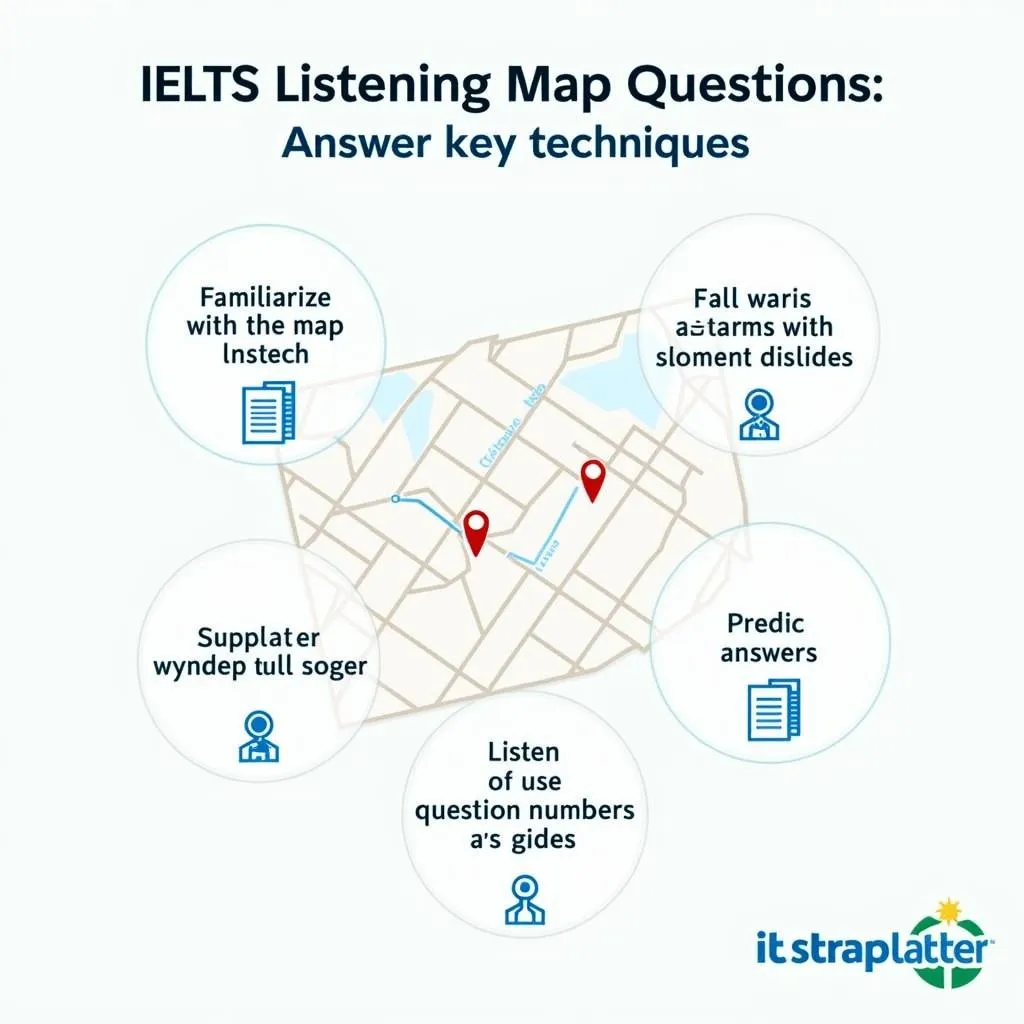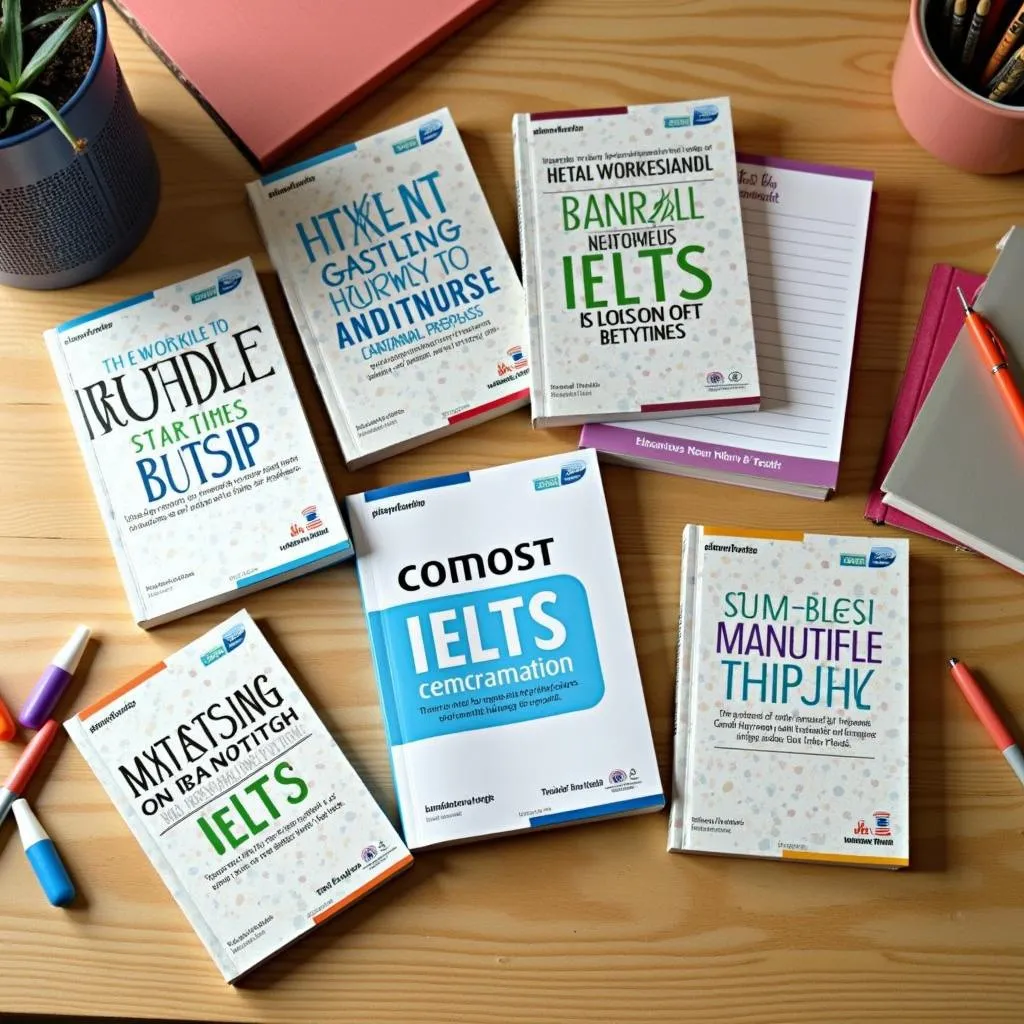Understanding Map Questions in IELTS Listening
Map questions are a common feature in the IELTS Listening test, typically appearing in Section 2. These questions require test-takers to identify specific locations or features on a map based on the audio information provided. Mastering the techniques for answering map questions is crucial for achieving a high score in the IELTS Listening module.
Nội dung bài viết
- Understanding Map Questions in IELTS Listening
- The Importance of Map Questions
- Key Techniques for Tackling Map Questions
- 1. Familiarize Yourself with the Map
- 2. Predict Possible Answers
- 3. Listen for Signpost Language
- 4. Use the Question Numbers as Guides
- 5. Write Answers Clearly and Concisely
- Common Pitfalls and How to Avoid Them
- 1. Misinterpreting Directions
- 2. Missing Key Information
- 3. Writing Too Much
- 4. Spelling Errors
- Practice Strategies for Improvement
- Next Steps
The Importance of Map Questions
Map questions assess your ability to:
- Understand spatial relationships
- Follow directions
- Identify key landmarks or features
- Process and apply information quickly
Developing proficiency in these skills not only helps with the IELTS test but also enhances your overall listening comprehension in real-life scenarios.
 IELTS Listening Map Question Example
IELTS Listening Map Question Example
Key Techniques for Tackling Map Questions
1. Familiarize Yourself with the Map
Before the audio begins, take a moment to:
- Study the map layout
- Identify key features (e.g., streets, buildings, natural landmarks)
- Note the compass directions if provided
- Locate any existing labels or information
This initial overview will help you orient yourself and anticipate possible answers.
2. Predict Possible Answers
Based on your map overview:
- Consider what types of places or features might be mentioned
- Look for gaps or unnamed areas that could be potential answer locations
- Think about common directional language (e.g., “next to,” “opposite,” “between”)
Predicting possible answers primes your brain to listen for specific information.
3. Listen for Signpost Language
Pay close attention to words and phrases that indicate:
- Directions: “Turn left,” “Head north,” “Go straight ahead”
- Locations: “Opposite the library,” “Next to the park,” “On the corner of”
- Distances: “About 100 meters,” “A short walk from,” “Just past”
These signposts help you navigate the map mentally as you listen.
4. Use the Question Numbers as Guides
The question numbers on the map often follow the order of information in the audio. Use this to:
- Anticipate which area of the map will be discussed next
- Quickly locate the relevant section of the map
- Stay focused on the current question
5. Write Answers Clearly and Concisely
When filling in your answers:
- Use clear, legible handwriting
- Stick to the word limit (usually one to three words)
- Use the exact words from the audio when possible
- Pay attention to spelling, especially for proper nouns
Remember, incorrect spelling will result in a loss of marks.
 IELTS Listening Map Techniques Infographic
IELTS Listening Map Techniques Infographic
Common Pitfalls and How to Avoid Them
1. Misinterpreting Directions
Mistake: Confusing left and right or misunderstanding compass directions.
Solution: Practice with directional language and always double-check your orientation on the map.
2. Missing Key Information
Mistake: Focusing too much on one part of the map and missing crucial details elsewhere.
Solution: Develop your ability to listen and scan the entire map simultaneously through regular practice.
3. Writing Too Much
Mistake: Exceeding the word limit or including unnecessary information.
Solution: Train yourself to identify and write only the essential words required for the answer.
4. Spelling Errors
Mistake: Misspelling place names or other key terms.
Solution: Pay extra attention to the spelling of proper nouns and unfamiliar words. If unsure, write what you hear phonetically.
Practice Strategies for Improvement
-
Use online resources: Websites like IELTS.NET offer practice map questions and audio samples.
-
Create your own maps: Draw simple maps and have a friend give directions for you to follow.
-
Engage with real-world maps: Practice following directions on maps of unfamiliar places.
-
Timed practice: Simulate test conditions by giving yourself strict time limits for each question set.
-
Review and analyze: After each practice session, review your answers and identify areas for improvement.
Next Steps
To further enhance your IELTS Listening skills:
- Expand your practice to include all types of IELTS Listening questions.
- Work on your general listening comprehension with English podcasts and news broadcasts.
- Take full-length IELTS Listening practice tests to build stamina and time management skills.
- Consider enrolling in an IELTS preparation course for expert guidance and feedback.
By consistently applying these techniques and strategies, you’ll be well-prepared to tackle map questions and improve your overall performance in the IELTS Listening test. Remember, success comes with regular practice and a methodical approach to learning.


